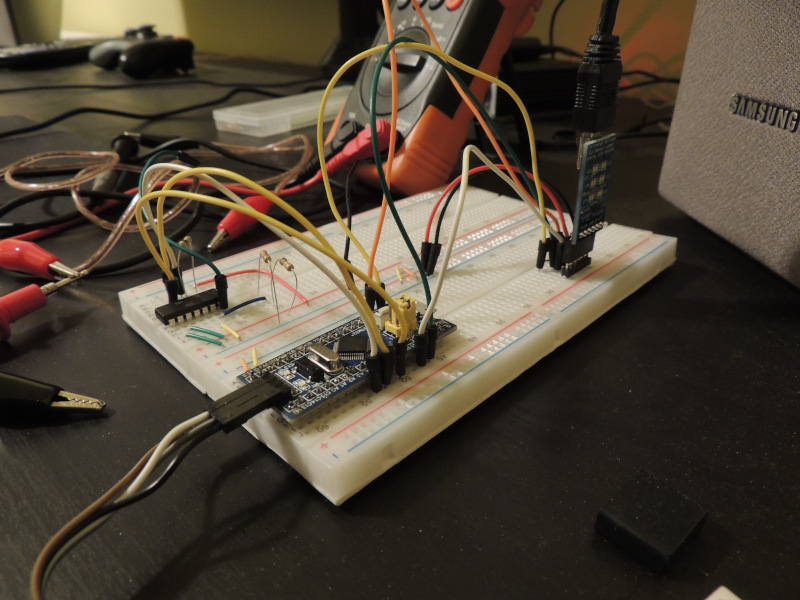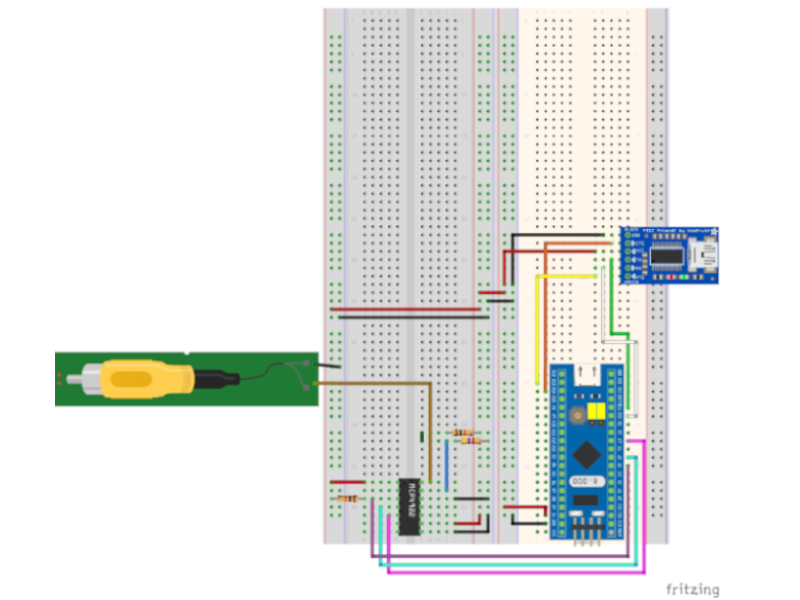AuDec
About
This is a personal project that I am currently working on so that I can improve my skills when working with embedded systems.

The device is a digital-to-analog converter (DAC) for PCM audio data. Basically what a DAC does is it reads in a chunk of digital data and outputs the analog signal encoded by the PCM audio data. This signal can then be fed into a pair of small speakers or into an amplifier if larger speakers need to be driven.
How it Works
I segemented the code into 3 tasks, which helped when architecting the code with FreeRTOS.
- HostIO
- This part of the code is responsible for communicating with the host, which is the PC in this case. The HostIO and the PC follow a protocol so that the DAC can fill up its input buffer as soon as it is ready to receive more data.
- Decoder
- Currently the DAC only works with WAVE audio files. The decoder changes either the 8-bit or 16-bit data into the proper length and signedness for the IC DAC (see diagram below) and places this data in the output buffer.
- DAC
- This part of the code sends data to the external IC DAC connected to the STM32. Since the bluepill does not have a DAC peripheral I needed to either use PWM to generate an analog signal or purchase an IC DAC. I chose the latter so that I could also learn about SPI communication.

Things I Learned
I figured out how to work with serial communication protocols such as UART and SPI. I used UART to communicate with the host PC and with a little bit of playing around I was able to get hardware flow control (RTS/CTS) working too.
To talk with the IC DAC I had to learn about SPI. It wasn't too bad to get the SPI peripheral on the bluepill up and communicating with the DAC. The next serial protocol that I need to learn is I2C. Once I think of a project that requires I2C I will be able to learn that protocol too.
To prevent the HostIO task from blocking I had to use DMA when transferring the PCM audio data to the input buffer on the device.
The sample rate of the audio file dictates how long the DAC needs to output a particular voltage level before switching to the next sample. To get this timing correct I figured out how to work with timers and interrupts.
Finally, to bring the project together I learned about FreeRTOS. FreeRTOS definitely helps in speeding up development time but there is quite a bit to figure out in regards to integrating it into a project. It was worth it though because the concept of tasks and task communication via queues and notifications helps in architecting the code into different modules.
Future Improvements
The first improvement I want to do is improve the output waveform. Using an oscilloscope I will be able to compare the output waveform of my DAC with an actual consumer DAC that I use. This will allow me to figure out what I can do to output a better signal.
The second improvement I want to add is USB support. Currently I use UART and a custom python script to send over the audio data. But if I can implement a USB driver then the host PC will be able to recognize my device as a USB HID audio device and output all audio data from the PC to the DAC, not just a particular audio file. This is going a big task as I will have to figure out how to communicate with the ALSA drivers on Linux too.
This is why it is important to work on a project in an iterative method. I am currently trying to get the first prototype at least working. Once I have that done I can then iterate and improve or add new features to the project.